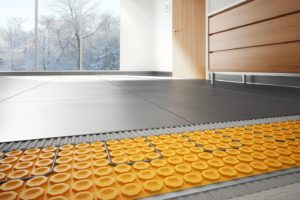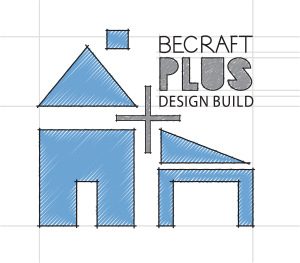
How Radiant Heating Works
Radiant heating can be used in your entire home or in selected rooms for a supplemental heating system. It depends on the natural circulation of heat within a room, slowly rising from the floor. This allows more warmth and comfort, since it’s not the typical rush of hot air from your duct heating. The heat lingers longer; and since your body feels the warmth immediately on your toes; it gives you a snug feeling.
Types of Radiant Heating Systems
Hydronic floor heating systems use hot water tubes to distribute the heat in the flooring. This has a more expensive installation cost, but a lower cost day to day. Therefore, it tends to be a more efficient system for large spaces, like a kitchen or a living room.
Electric floor heating systems use wiring in the flooring, so are less expensive to install but more expensive to run day to day. These systems are usually only cost-effective if there are thick concrete floors that hold the heat for eight to ten hours, and if your utility company offers time-of-use rates. Time-of-use rates allow you to ‘charge’ your concrete floor during off-peak hours at a lower rate. This can save money on your utility bills, since heating during the day is more expensive than overnight usage. In some home additions, electric radiant floors can also be the best option, since it may be impractical to extend the current heating system.
Choosing the Right Materials
Tile, stone, and concrete floors retain heat better than other materials. This makes them the best choice for the installation of an underfloor heating system. The recommended thickness of the flooring is a maximum of ¾”, since the thickness correlates to the amount of time it takes for the floor to heat up
Marble also has good heat conductivity but it takes longer to heat up.
Underfloor heating also works well with hardwood flooring. However, you should choose a wood type and a heating type that delivers good heat conduction and can withstand the moisture produced by the heat.
Carpeting is not usually the best option for underfloor heating, since it tends to insulate the floor.
Keep in mind that floor finishes have different top temperature restrictions; therefore, the choice of flooring can limit the heat output in the room. Consider the size of the overall heated floor, as well as the air and floor temperatures, to ensure you get the maximum benefit.
Other Considerations
The expense to rip up a floor in order to install a heating system may be too cost prohibitive. The time to think about underfloor heating is when you are remodeling rooms or putting in new flooring in your home. When you are wondering if the investment in heated floors is worthwhile, envision the luxurious experience of your bare feet hitting the warm floor in the winter. This lavish amenity can also increase the value of your home.
Contact Us (301-929-3401) For a Free Consultation!
—
 About Becraft Plus
About Becraft Plus
Since 1989, Becraft Plus has provided customized design and construction services to customers in the Washington, D.C. area. We specialize in custom home building, additions and remodeling, and whole house renovations with a focus on creating living spaces that are tailored to the needs of our clients.
>> Learn More

 About Becraft Plus
About Becraft Plus